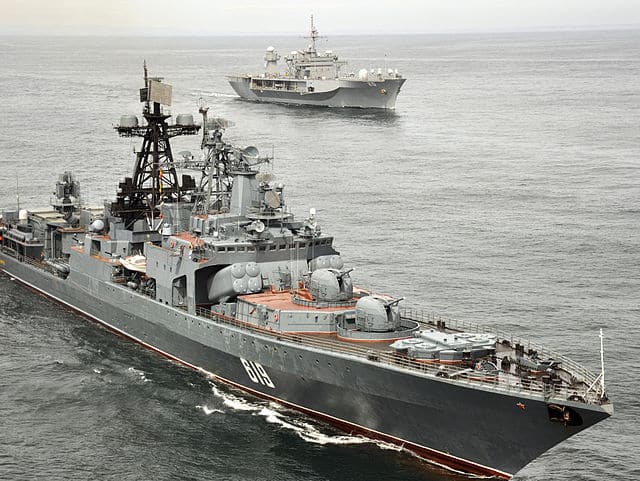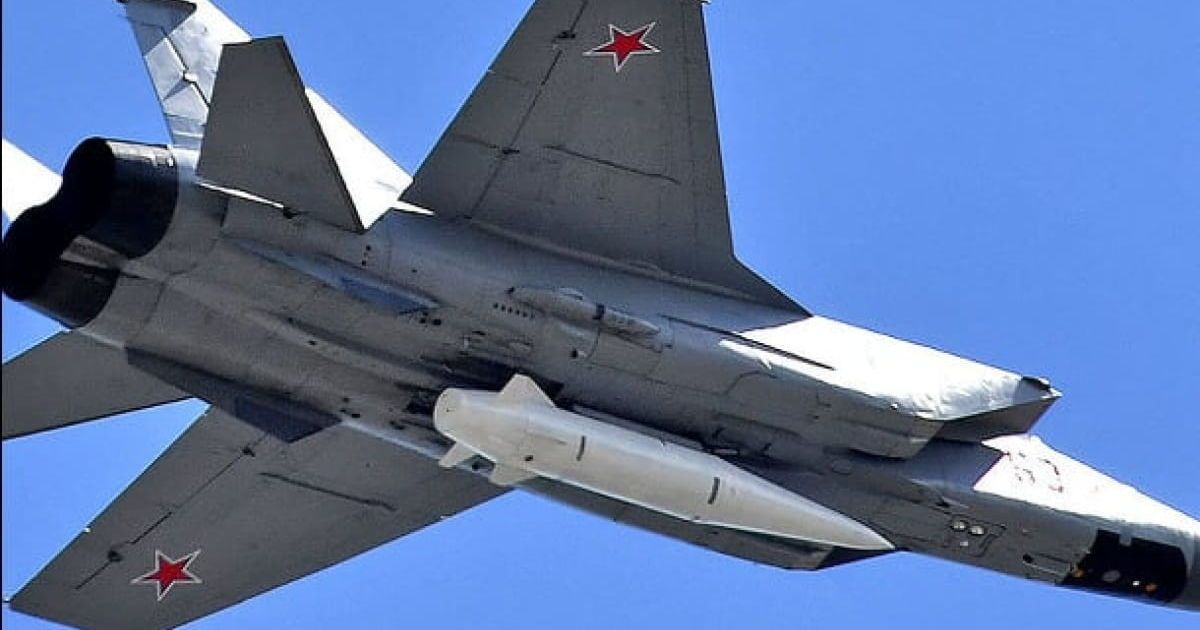Table of Contents
The Russian-Ukrainian war has been called the most technologically advanced in human history. Every day, the world witnesses from bird’s-eye view how Ukrainian military forces repel Russian attacks and counterattack.
Thousands of civilian and military drones take to the sky on both sides of the frontlines. They conduct reconnaissance, strike positions, or assist commanders in coordinating the actions of soldiers during battles. Technological solutions can compensate for the numerical advantage of the enemy, significantly enhancing the effectiveness of military operations.
Currently, the Armed Forces of Ukraine possess a fundamentally different range of armaments than they did before February 24, 2022, particularly in the field of military technology.
The boom in Ukrainian military developments indicates that within the first month and a half since the launch of the Defense Tech development platform — Brave1, over 250 projects were submitted, with more than 100 undergoing military expertise by the General Staff.
Economichna Pravda (media outlet) highlights domestic military-tech developments that help the Armed Forces of Ukraine inch closer to victory.
Logics7
Ukrainian IT company Logics7 is creating versatile training systems for the fire preparation of Ukrainian military units. The system serves as a military simulator, allowing cost savings on scarce weapon types by providing realistic training.
The first professional simulation system was created long before the war. In 2019, the company developed its first project in the military-tech direction: a simulator for controlling the T-80 tank and the BMP-2 combat vehicle. Later, a fire training simulator was created.
“In the following years, such projects did not have much demand. There were only sporadic sales through our partners. The army was not interested in purchasing such technologies,” says Igor Belov, co-founder of PSS by Logics7.
The outbreak of the full-scale war and the mass mobilization of people, who often lacked experience in using weapons, prompted the company to create versions of simulation systems for fire control. In addition to existing rifles and pistols, two modifications of handheld anti-tank grenade launchers (RPG-7 and RPG-22) were added.
Currently, the UNIST system includes 24 weapon modules, including anti-tank systems like NLAW and Javelin, as well as portable anti-aircraft complexes such as Stinger and Igla.
“If we take a regular rifle or RPG, a soldier can learn how to use it. However, Western anti-tank guided missiles and man-portable air-defense systems, which we consider smart weapons, cannot be used without training,” explains Belov.
Each weapon included in the simulator takes into account ballistic characteristics with adjustments for wind strength and air temperature. Additionally, calculations are made for angular velocity and projectile trajectory based on the ballistic data provided by the manufacturer. Considering all these factors allows for a virtual weapon utilization experience that closely resembles reality.
Furthermore, the size and weight of the simulator models are identical to real weapons. This allows soldiers to train their muscle memory, enabling them to effectively carry out combat tasks. Special conditions are not required for the use of UNITS by the military, and the system’s capacity allows for 1,500-2,000 person-training sessions per month.
According to the company’s calculations, over 45,000 people have undergone training. This number does not include those who are trained on the systems transferred to the Armed Forces. According to Belov, we can talk about hundreds of thousands of military personnel who have used UNITS.
The price of the simulator depends on the number of weapon modules included. The base system, which includes small arms (pistol and rifle), costs around $10,000. With additional modules, the total price can increase up to $500,000.
The company reinvests the funds received into creating systems with the addition of new weapon modules and envisions itself in international markets.
SkyLab
The Kharkiv-based company SkyLab emerged after the start of the full-scale war. In September 2022, the team focused on the first model of its own multicopter, called Djura MK-6, capable of lifting a payload weighing over 6 kg.
After Djura, the team of engineers collaborated with the military for an extended period, receiving recommendations for modifying the copter. As a result, SkyLab settled on a version that became their baseline: Shoolika MK6.
“There are three specifications for Shoolika MK6. They differ in three categories: communication security, camera, and payload capacity. We can produce ten Shoolika MK6 strike copters per month in different modifications. We plan to double these figures within a quarter,” explains SkyLab founder Yevgen Rvachov.
The cost of a single Shoolika MK6 is $25,000-30,000.
See also: The Ukrainian fleet that is needed “for yesterday”
The company also develops ground robotic technology. In February, it presented the model of a small rover called UGV JOHNY MK1. This six-kilogram drone can function as a kamikaze and carry up to 4 kg of explosives. JOHNY MK1 is fully waterproof and can travel distances of 1-5 km.
Another creation by SkyLab is the SIRKO-S robot. It performs a wide range of tasks, from cargo transportation to reconnaissance and facilitating communication between units. SIRKO-S can carry a payload of 150 kg and tow up to 100 kg.
The platform is planned to be adapted for the evacuation of the wounded. SIRKO-S is capable of covering distances of up to 5 km, but with the installation of a radio repeater, the range can be increased.
According to Rvachov, the production volume of SIRKO-S is up to ten units per month. If necessary, the company can increase production to 100 units. In the summer of 2023, the company announced the next version of the ground drone, SIRKO-M. The new version will have a payload capacity of 300 kg. The price of JOHNY MK1 is $4,500-5,000, and SIRKO-S is priced at $8,500.
For SkyLab, it is important for its product to be needed by the Ukrainian army.
“For me, it would mean an increase in the number of clients because I don’t want to manufacture just for the sake of production,” emphasizes Rvachov.
Griselda
Griselda was born in the early weeks of the full-scale war. It became evident then that the massive flow of information filling the networks needed to be verified and structured. The Griselda system enables automated gathering of information about the enemy, its positions, and movements.
As the creators of the platform emphasize, Griselda operates using artificial intelligence, which analyzes, filters, and verifies incoming information about the enemy. Afterwards, the data is reviewed by system operators and military analysts. Verified information is then published on the platform for utilization.
The Griselda team reveals that all modules of the system were driven by the war itself. In other words, there was no time for hypothesis development in the project; everything was dictated by practicality and interaction with the military.
The entire flow of information entering the system undergoes several stages of analysis. At the first stage, a surface check takes place using artificial intelligence (Al) which automatically filters valid information (data duplication, relevance, or disinformation). Processed data is then consolidated into an information block with the status of a “New ticket.”
The operator verifies the processed information for relevance and the validity of coordinates. If necessary, the operator can make adjustments to the data.
After the operator’s verification, information with the status of “processed” undergoes further scrutiny by a military analyst who can cross-reference it with the original report and make any necessary corrections.
In the final stage, the information is rechecked by AI to train the neural network and prevent errors that operators may have made during manual adjustments.
To grasp the scale and efficiency of the system’s operation, over 25,000 targets are processed through Griselda each month, and the record for processing time from receiving enemy information to its appearance in the system stood at 28 seconds.
In addition to hosting processed information on its own platform, Griselda also works with other military applications, including Kropyva, Armour, Hisarta, and Delta.
See also: Hacking the Lancet. Ways to defend against a Russian drone
The Griselda system is also utilized by various situation centers and reconnaissance units for enemy information retrieval, reporting, military hypothesis verification, and counterintelligence operations.
Maritime drones
The concept of maritime drones has been developing in various countries for years. However, Ukraine has become the first nation to start creating its own fleet of maritime kamikaze drones.
Ukrainians witnessed the first application of maritime drones in October 2022 when they attacked the Russian Black Sea Fleet base in Sevastopol. Later, President Volodymyr Zelenskyy announced the formation of a fleet of such strike boats through the United24 platform.
United24 released the first specifications of the drones. They have a length of 5.5 meters, weigh approximately one ton, can reach a maximum speed of 80 km/h, have a range of 800 km, autonomy of 60 hours, and a combat payload capacity of up to 200 kg.
The kamikaze boat can conduct reconnaissance, escort navy ships, and protect the coast and merchant ships from sabotage groups. The cost of the drone is about $250 thousand.
Ukraine has started developing underwater kamikaze drones — guided torpedoes. The Toloka project, presented on the coordination platform Brave-1, involves creating three versions of underwater drones: TLK 150, TLK 400, and TLK 1000.
TLK 150 is the smallest model in the project, with a combat payload of 20-50 kg and a range of 100 km. The TLK 150 torpedo is equipped with an electric motor and a hydroplane, with a camera and antenna located on top. It is envisaged that the guided torpedo will be able to search for targets by scanning the space using a 3D sonar and microphone.
TLK utilizes GPS signals for its guidance system, and in the absence or jamming of GPS, it relies on an inertial navigation system. In the other TLK modifications, the combat payload and range are increased. For instance, TLK 400 will have a range of 1,200 km and a combat payload of 500 kg, while TLK 1000 will have a range of 2,000 km and a 5-ton explosive payload.
Keep robotics
In the fall of 2022, the Keep robotics team began working on a multifunctional electric cargo ground drone called Mul. The primary purpose of the drone is to perform logistics tasks. Mul is capable of transporting cargo in hazardous areas since it operates as an unmanned platform.
Mul can be utilized in rugged terrain. The system has a low profile and operates with quiet electric motors, allowing it to remain inconspicuous.
“Mul can serve as support for infantry groups. Such groups often engage in missions and face the challenge of carrying heavy loads on themselves,” explains Pavlo Shelyazhenko, the founder of Keep robotics.
The weight of such a drone is 250 kg, with a length of 1.5 m and a width of 1 m. Mul can carry up to 400 kg of payload, and its operating time is 8 hours.
“The dimensions of the drone were chosen so that it could be transported in the bed of a pickup truck or a cargo vehicle, making it quite mobile,” explains Shelyazhenko.
Due to the small team size, Keep robotics focuses on large-scale assembly. They order ready-made components from Ukrainian subcontractors. The cost of one system is around $8,000-$9,000. Thanks to significant production decentralization, the team is prepared for rapid scaling.
The Mul’s creators are working with a Kharkiv-based team to create a drone-based demining system. According to Shelyazhenko, the system is designed for anti-personnel mines, where the drone pushes a trawl ahead of it to detonate the mines.
Originally posted by Ihor Pylypiv on Economichna Pravda. Translated and edited by the UaPosition – Ukrainian news and analytics website




